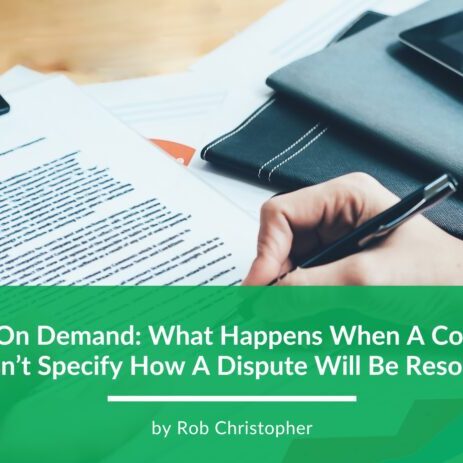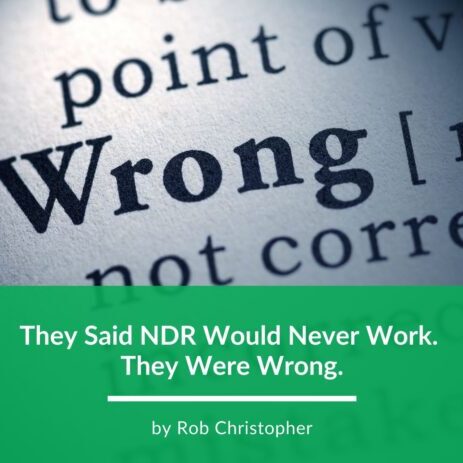Forcing Law Firms to Innovate: First, Get Your (In)House in Order

Even though it may feel like a steep uphill climb for in-house counsel to force law firms to innovate, there are things that in-house counsel can do to encourage change. In the prior article in this series, I asked “Why won’t in-house counsel force their law firms to innovate?” and the most common answer was that “there is very little we can do to “force” anything…other than rates and reporting. We can’t tell them how to run their business…”
Wait, but why can’t we? I don’t buy into the mentality that we can’t change how they run their businesses. If we know our needs, why can’t we get out outside counsel and other service providers to deliver what we want, how we want it? After all, we choose with whom we do business.
To force outside service providers to innovate, my basic advice is very simple: Be proactive. About everything. Here’s how…
Law Department Metrics
Look closely at your own law department metrics; too many attorneys do not. Break down your two biggest ticket items of people and outside counsel fees, as well as any other spending, and ask:
• Where are your in-house counsel hours being spent – from the General Counsel down to the last legal assistant? Track all time for a month (or two or three), no matter how painful it is. Granted, it doesn’t have to be in 6 minute increments like a law firm, but if time is tracked in 30 minute or hour blocks, it will give you a good picture of what activities are taking up the most time and attention.
• How and with whom are your outside counsel dollars being spent – from the large class action suit down to stock administration? What types of work are being done? By how many law firms? And within them, by whom? Track it all.
• Where are your other in-house dollars being spent? What service or technology is being used or purchased and why? Track these costs as well.
Resource Assessment and Risk Management
Once you have the data, which doesn’t have to be perfect, analyze it to see where and how you are spending your money and whether this makes sense. For example, if your corporate counsel are spending all of their time in business meetings, are they able to do the legal work? If senior lawyers are mentoring younger lawyers, is that the best use of their time? If lawyers are burning out spending a lot of time on M&A due diligence or litigation document productions, is this the right distribution of staffing resources?
Assess what is at risk or stake in every time-and-money-burning project. Try to put values on each. Then compare those stakes with the costs incurred and the outcomes historically incurred to make value judgments about whether the handling of each is economically rational, or if different paths ought to be explored. For instance, if your litigation department is spending most of its time on common, low stakes cases, does this work even belong in-house, and if you’ve farmed such cases out, do the stakes and outcomes warrant the legal costs?
Become Better Consumers of Legal Services
Use your assessment to clearly understand what resources you need and why, and then explore your options and the costs of each, to inform future action and thereby become a better consumer of legal services:
• Know what services you need and why. For example, if you need construction litigation expertise, you will be looking for very specific outside counsel. If you need patent counsel in the Eastern District of Texas, you will be looking for even more specific outside counsel.
• Know how long these services are needed. Is your need temporary? For example, is this the only class action or shareholder suit you are facing? Or is it an ongoing need, like employment law expertise? Is there a new ongoing need because you acquired a business that requires certain expertise, like export law or international law?
• Know your options by investigating both traditional and nontraditional solutions. Don’t be afraid to think outside the box. Research and identify available service providers.
• Know how much your options are likely to cost, including across firms and regions, so you can right size your solutions.
Take Action
Once your analysis of needs and options is done, develop your action plan and act decisively. Divide your plan between what will be done with in-house resources and what will be done with outside resources.
For in-house resources, look closely at the work that is being and yet to be done and categorize it as follows:
• Do – What will you continue doing or start doing? Are you staffed properly? For instance, are you burning out lawyers? Are you spending more on outside counsel fees than it would cost you to hire a full-time person dedicated to that area or function? Do you need to do certain work because of a change in the business, like acquiring a subsidiary?
• Don’t do — What will you quit doing? Should some work be done in another business department, or by paralegals in a defined and stepped process? Does the expertise needed require going outside the company, for example to outside counsel for immigration advice?
• Do differently – What will you do differently? Be innovative, creative, and proactive, as nothing should be off the table when considering how or whether to do things differently. For example, can you send work to a lower level, like having paralegals do the first review of trademarks or export work? What work should be leveled up to its own in-house lawyer, like securities or eDiscovery? What work should be sent to outside counsel, or other third party service provider? What can be automated and put into a template agreement or transaction like an NDA or Independent Contractor Agreement? What can be done at the business unit education level to use your resources more effectively? For example, can you train your sales force to negotiate the sales contract without individual input from the legal department on certain changes?
As for outside counsel and other service providers, let’s start with two fundamental points:
First, as discussed in the prior article in this series, certain realities must be borne in mind: For example, while in-house counsel should officially control the purse strings of the company’s outside legal spend, there may be other dynamics at play, including that in-house counsel may not control every relationship. Nevertheless, it is important to recognize that you carry a big negotiating stick here.
Second, I firmly believe in partnership relationships here – Involve outside service providers in the process of innovation. Tell them your concerns, and the analysis you’re doing. Even just letting your outside law firms know this will cause them to pay attention, and possibly help your efforts. Then ask outside counsel for feedback and ideas before making changes that affect them. Do their answers and suggestions truly address your concerns? This conversation will reveal their willingness to innovate with you.
In any event, your action plan should take the same approach you did above with in house resources:
• Continue – What work should continue on its current basis? Is there particular expertise or specialization that is needed, as in class action litigation? Is there a specialty needed but not enough work yet to warrant bringing it in-house?
• Consolidate – What work can be consolidated across firms or geographical regions? For example, should your eDiscovery work be consolidated for consistency?
• Change – What work can be done more economically? For example, can some work be pushed down to paralegals or admins? Or is there work – like compliance or privacy – that needs to be pushed up to an expert? Is there work that can be moved out to a different third party service provider rather than a law firm? For example, can limited stakes litigation be more economically handled through a third-party, non-adversarial path like Just Resolve, and if so, what should you do to access such a solution?
The above analysis should be done both to run an efficient and effective legal department and to arm you with the information and data needed to have productive conversations with outside law firms and other service providers. This in turn will enable you to force them to innovate to stay on your team.
Stay tuned for my final article in this series, which will discuss several current innovations in the legal service space.
More to read
NDR on Demand: What Happens When a Contract Doesn’t Specify How a Dispute Will Be Resolved?
The best way to deter threats of litigation and minimize the costs, duration, and distractions of resolving any dispute is to put a dispute resolution clause specifying NDR — Neutral-Driven Resolution — in all your contracts BEFORE there is a problem. That means that if a dispute should arise between a business and a contractor,…
They Said NDR Would Never Work. They Were Wrong.
Many people are surprised by how effective NDR can be. Since publishing my book and speaking at events about NDR (Neutral-Driven Resolution), I’ve often been asked a simple question: Does it work? And if it really does lower the costs and the time it takes to settle common disputes, why doesn’t everybody know about…
“Morgan Hill author releases new book”
The Morgan Hill Times featured Rob’s new book in an article ahead of his “Meet the Author” night at Booksmart. “Legal disputes and conflicts cost businesses billions of dollars a year in lawyers’ fees, lost productivity, time and aggravation. A new book by Morgan Hill author Robert Christopher proposes an innovative, faster and simpler way…
Not All Disputes are Equal
Not all business and legal disputes are alike, and not all of them can be resolved in the same way. In writing my book Just Right: How Neutral-Driven Resolution Can Close the Gap in American Civil Justice, it was important to distinguish the types of common disputes for which NDR is most suitable. As readers…



